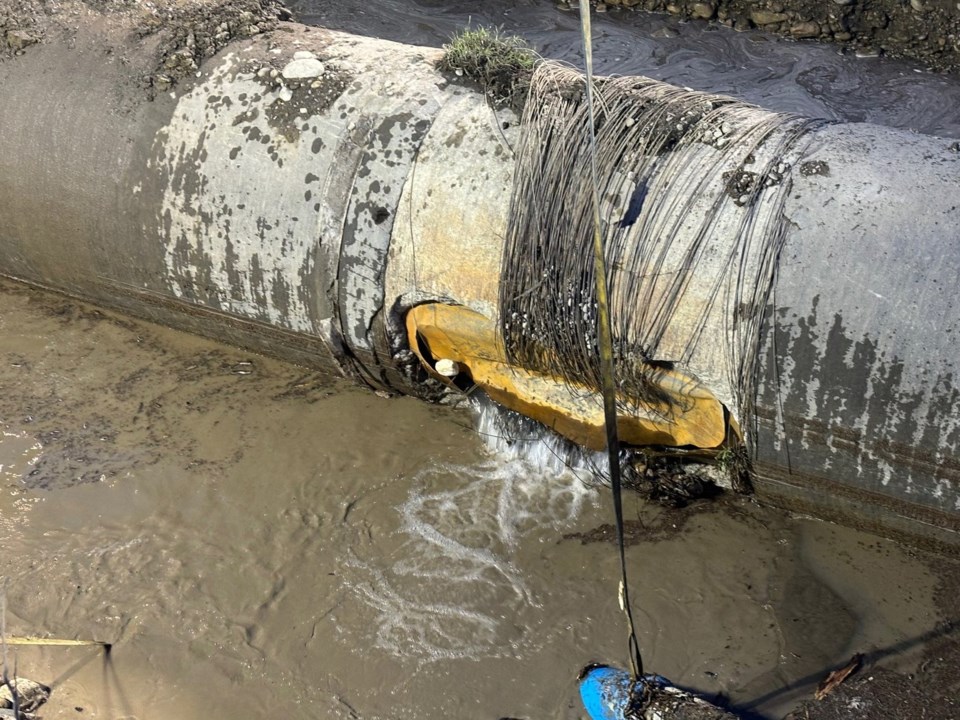CALGARY — The City of Calgary says a panel will review why a massive water main ruptured two weeks ago, while experts say the extended water conservation crisis should be a nationwide wake-up call.
David Duckworth, Calgary's chief administrative officer, says the panel of academics and industry experts will study the water main break and suggest changes to prevent future disruptions.
“Once an external consultant has been engaged and the panel has been established, they will confirm the full scope of the review,” Duckworth told reporters Tuesday.
Calgary, a city of about 1.6 million people, and its surrounding areas have been under a combination of mandatory and voluntary water restrictions since the pipe ruptured 13 days ago in a northwest neighbourhood, stopping up to 60 per cent of the city’s water supply.
All outdoor watering is banned, while Calgary Mayor Jyoti Gondek has been holding daily news conferences urging residents to reduce toilet flushes, take shorter showers, do fewer loads of laundry and dishes, and even collect rainwater in kiddie pools to water their gardens until repairs are complete.
Restrictions are to last three to five more weeks until the city, which has reached out to various national and international groups for advice, finishes ripping apart a concrete roadway to reach five other defective spots along the pipe discovered more than week after the break.
Gondek’s briefings have been met with mixed results, with residents reducing water use to recommended levels some days while using too much on others, risking the taps going dry.
The city has handed out warnings and tickets for outdoor watering. It has also fielded complaints about why residents must go without while golf course owners get to water greens and city crews are still spraying trees.
Gondek has had to explain the difference between treated drinking water and non-treated or non-potable water. Non-treated water is being used on golf greens and trees and doesn’t affect drinking water levels, she said.
For days after the June 5 break, thousands of residents living near the water main break had to boil their murky brown water to drink it, prompting some to call it a window into the world of some First Nations forced year-round to boil their water.
Kerry Black, a civil engineering professor at the University of Calgary, said questions residents are asking and the way the city has gone over the recommended water use on some days is an eye-opener.
It suggests "people really have no idea how they're getting their drinking water and where their wastewater goes," she said.
"It's really important that we give people the chance to really understand the key part about infrastructure and how much you rely on it."
She said water main breaks happen throughout the city every year.
"What's unexpected is the magnitude of this failure, how many people it's impacted, the size of the pipe that was impacted, how long it's taking to recover from it, and the fact that there was really no warning signs up until this point."
Black and Matti Siemiatycki, director of the Infrastructure Institute at the University of Toronto, said Calgary’s crisis is also a reminder of the tightrope cities walk with aging infrastructure.
"Aging infrastructure becomes more brittle and either needs major overhauls or needs replacements. It certainly needs close attention,” said Siemiatycki.
"(When it ruptures), it's devastating on people's lives. It's devastating on businesses. It will make clear what our Indigenous communities have been experiencing for a long time.”
Black and Siemiatycki said money must be part of the conversation for long-term fixes.
"We need more resources in order to be able to address what is a very large infrastructure gap in the Canadian context. It's just you can't necessarily afford to replace everything all at once,” Black said.
Siemiatycki said while the federal government invested heavily in water infrastructure across the country from the 1950s to the 1970s, municipalities have since been bearing the burden of maintaining them. And everyone is now seeing in Calgary what can happen when they kick the problem down the road.
"They will be recognizing that (infrastructure, like water mains) are fragile and the impacts are significant," Siemiatycki said.
"Infrastructure is often out of sight (and) out of mind — when it works."
This report by The Canadian Press was first published June 18, 2024.
— By Fakiha Baig in Edmonton
The Canadian Press



